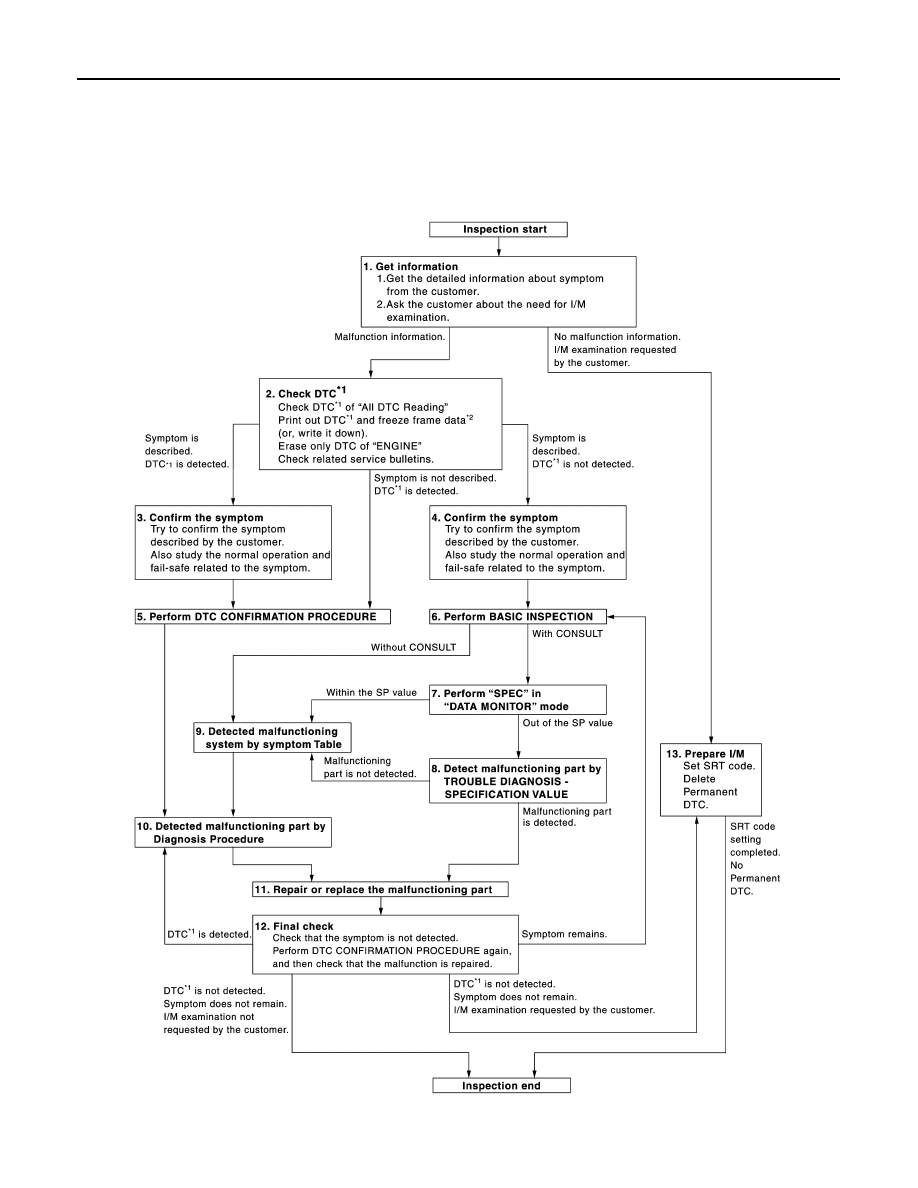Nissan Versa Note. Manual - part 284

EC-118
< BASIC INSPECTION >
[HR16DE]
DIAGNOSIS AND REPAIR WORKFLOW
BASIC INSPECTION
DIAGNOSIS AND REPAIR WORKFLOW
Work Flow
INFOID:0000000009020648
OVERALL SEQUENCE
*1: Include 1st trip DTC.
*2: Include 1st trip freeze frame data.
JSBIA0123GB